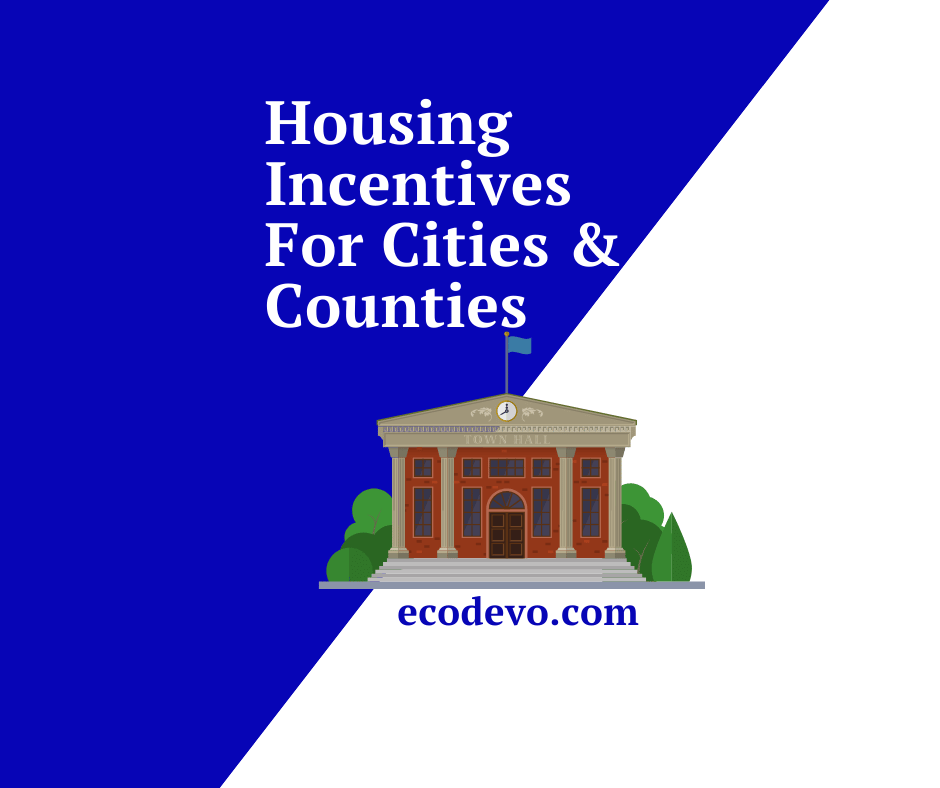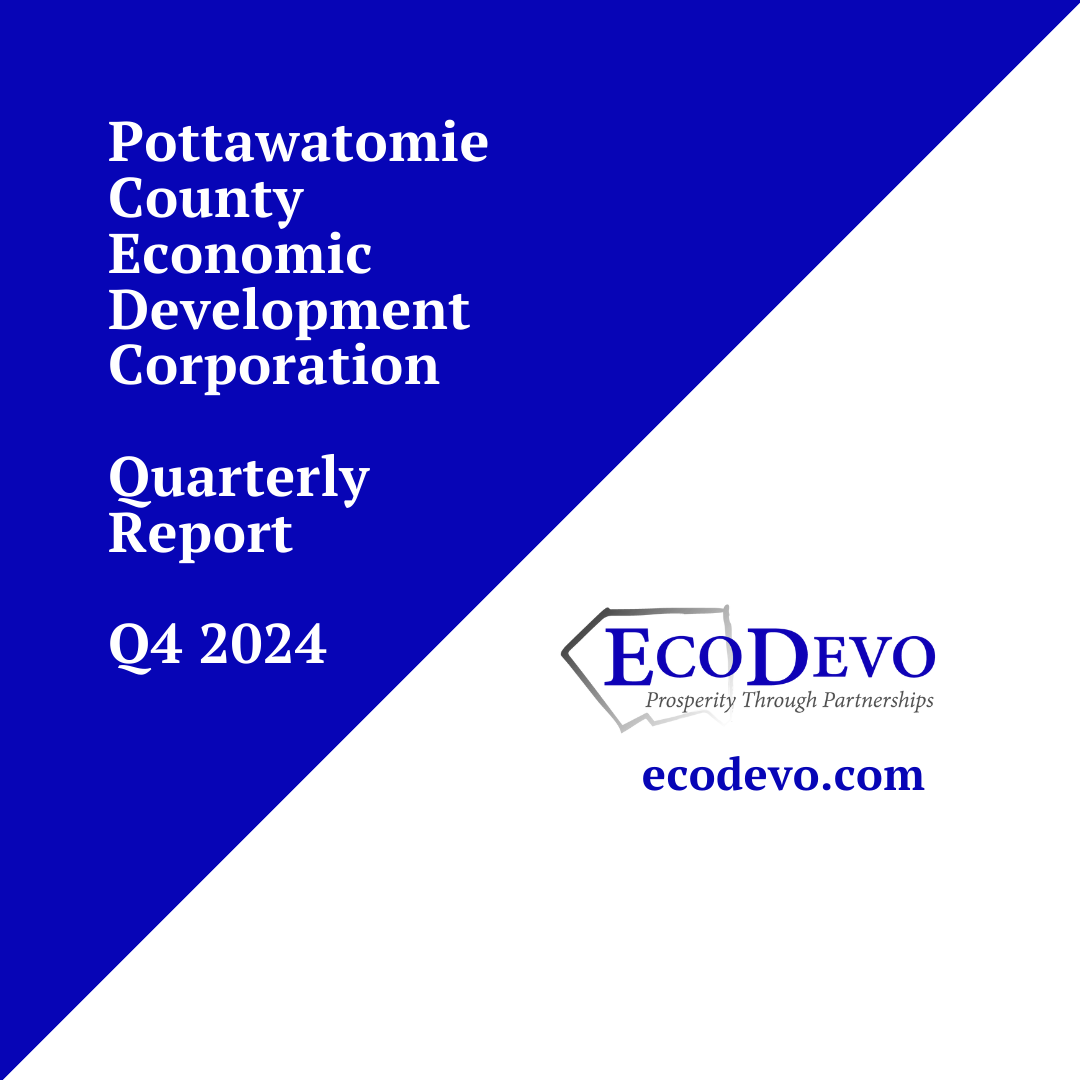
By: The Pottawatomie County Economic Development Corporation (PCEDC) | 11.11.24
Cities and counties across the nation are increasingly interested in offering incentive programs for housing projects to address pressing challenges related to affordability, workforce retention, and economic growth. With the demand for housing outpacing supply in many areas, local governments recognize that incentivizing new development—especially for affordable and workforce housing—can play a critical role in creating vibrant, stable communities. By strategically offering incentives, cities and counties can stimulate private investment, help meet housing demand across income levels, and ensure that housing remains accessible for residents, including essential workers. Additionally, housing incentives can attract new businesses, as employers often consider the availability of local housing when deciding where to expand or relocate. For these reasons, housing incentive programs are essential tools for local governments aiming to promote long-term economic prosperity and community resilience.
Here’s a more detailed look at the range of housing incentive options a city or county could consider.
1. Tax Abatements and Property Tax Exemptions
- How It Works: The city could offer temporary reductions or exemptions from property taxes for housing developers to reduce their operating costs. This incentive typically applies to affordable, workforce, or other targeted housing types.
- Example: A 10-year tax abatement where developers pay reduced property taxes or no taxes on improvements, which gradually phases back to full taxation.
- Benefits: Encourages developers by reducing initial financial burdens, making projects more viable and attractive in a competitive market.
2. Impact Fee Waivers or Reductions
- How It Works: Cities often charge developers impact fees to offset the costs of infrastructure needs that new developments create (e.g., schools, roads, sewer systems). Waiving or reducing these fees lowers the overall project cost.
- Example: A city may waive impact fees for developments that include a certain percentage of affordable housing units.
- Benefits: Reduces costs for developers, especially in areas where impact fees are high, making projects more affordable to undertake.
3. Infrastructure Support and Public Improvement Financing
- How It Works: The city could fund or assist in the construction of infrastructure needed for housing projects, like streets, sidewalks, or water and sewer lines, which developers would typically pay for.
- Example: The city could build or fund utility connections to make undeveloped land more accessible and attractive for development.
- Benefits: Reduces upfront costs for developers and expedites project timelines by having infrastructure in place or supported by the city.
4. Density Bonuses
- How It Works: Density bonuses allow developers to build more units than normally permitted under current zoning laws if they include affordable housing or other desired features (like green building elements).
- Example: A developer could add two extra floors to a building in exchange for reserving 20% of the units as affordable housing.
- Benefits: Increases potential revenue for developers without requiring additional land, encouraging more housing in a limited space.
5. Expedited Permitting and Zoning Adjustments
- How It Works: Cities can offer fast-tracked permitting, priority processing, or zoning adjustments for projects that meet housing needs, reducing the time and costs associated with approvals.
- Example: A project focused on workforce housing could receive approval in half the usual time.
- Benefits: Provides a significant incentive by minimizing delays, which can be costly for developers, and encourages quicker housing delivery.
6. Grants and Low-Interest Loans
- How It Works: Cities can directly provide funds to support housing development, either as grants (which do not need to be repaid) or as low-interest loans (offering favorable repayment terms).
- Example: A grant program that provides matching funds for developers who incorporate sustainable building practices into affordable housing projects.
- Benefits: Makes projects financially viable for developers who might otherwise struggle to secure financing, especially for affordable and workforce housing.
7. Land Donations or Land-Use Agreements
- How It Works: The city could donate public land or offer land at a reduced price specifically for housing projects that meet certain community needs.
- Example: A city donates a vacant lot to a developer who agrees to build affordable or workforce housing units.
- Benefits: Reduces one of the largest costs in development, making affordable housing projects more economically feasible.
8. Tax Increment Financing (TIF) Districts
- How It Works: A TIF district freezes the tax base at pre-development levels, with the increase in tax revenue generated by new development (the increment) directed back into the district to fund infrastructure improvements or other project costs.
- Example: A city could create a TIF district around an area targeted for redevelopment, using the increment to fund housing-related infrastructure.
- Benefits: Provides a funding mechanism without impacting existing taxpayers, as the revenue comes from the increase in property value generated by development.
9. Affordable Housing Trust Funds
- How It Works: The city establishes a fund to support affordable housing development, funded through city allocations, developer fees, or other sources, and used to offer grants or loans.
- Example: A portion of developer fees on new commercial projects is directed to an Affordable Housing Trust Fund.
- Benefits: Creates a dedicated resource for housing initiatives, ensuring ongoing support for affordable housing development.
10. Permit and Fee Refunds for Targeted Housing Types
- How It Works: The city could refund certain fees if a developer meets conditions, such as dedicating a percentage of units to affordable housing.
- Example: Refunds of up to 50% of permit fees for developments with affordable units.
- Benefits: Reduces expenses for developers on the back end, offering savings after completion, which can be particularly appealing in projects with slim profit margins.
11. Community Land Trusts and Land Banks
- How It Works: The city can support or partner with community land trusts or land banks that acquire, develop, and maintain affordable housing units.
- Example: A land trust acquires properties and leases the land to developers or residents, ensuring long-term affordability.
- Benefits: Keeps housing affordable over the long term by removing land speculation and price inflation from the equation.
12. Rent Subsidies or Down Payment Assistance Programs
- How It Works: Cities can provide subsidies to assist low-income tenants or offer down payment assistance to first-time homebuyers in new developments.
- Example: Providing rental assistance vouchers to eligible tenants or offering down payment grants for first-time homebuyers in specific developments.
- Benefits: Supports low-income residents directly, expanding access to new housing and improving occupancy rates for developers.
13. Inclusionary Zoning Ordinances
- How It Works: The city could mandate that a certain percentage of new housing units be affordable. While not a direct incentive, cities often pair this with incentives like density bonuses or fee waivers.
- Example: Requiring that 15% of units in new developments be designated affordable to lower-income residents.
- Benefits: Ensures that a portion of new housing meets affordability standards, promoting a mixed-income community.
Each of these incentives can be tailored to fit the city’s housing goals, targeting specific types of housing (e.g., workforce, affordable, senior housing), fostering private investment, and supporting overall economic growth by meeting housing demands. Combining multiple incentives can also create a comprehensive package that addresses developers’ various financial, regulatory, and operational needs.
Which Incentives Show the Best Returns?
- Density Bonuses and Inclusionary Zoning tend to show the highest returns in high-demand urban areas, creating a mix of income levels within housing developments and maximizing land use.
- Tax Increment Financing provides strong financial returns by directing new tax revenues back into developments, which encourages economic growth without impacting current residents.
- Expedited Permitting and Fee Waivers show good returns in terms of cost-effectiveness and time savings, making these incentives attractive to both developers and cities with limited budgets.
- Land Donations or Land Trusts often have the highest long-term social return by maintaining affordability and stabilizing communities over time.
- Affordable Housing Trust Funds and Rent Subsidies provide consistent support for affordable housing, which can create steady growth in affordable units and help reduce homelessness rates.
Each city’s needs and budget constraints will determine the best combination, but these practices have proven effective in many regions.
Read More:
What is “Affordable Housing” in Pottawatomie County? A Math Problem
Current Housing Needs in Pottawatomie County
Housing in Pottawatomie County: Spruce Apartments Case Study
Housing Affordability in Pottawatomie County and Beyond
Affordable Housing for Workforce Retention and Attraction
Missing Middle Housing: Thinking Big and Building Small to Respond to Today’s Housing Crisis



